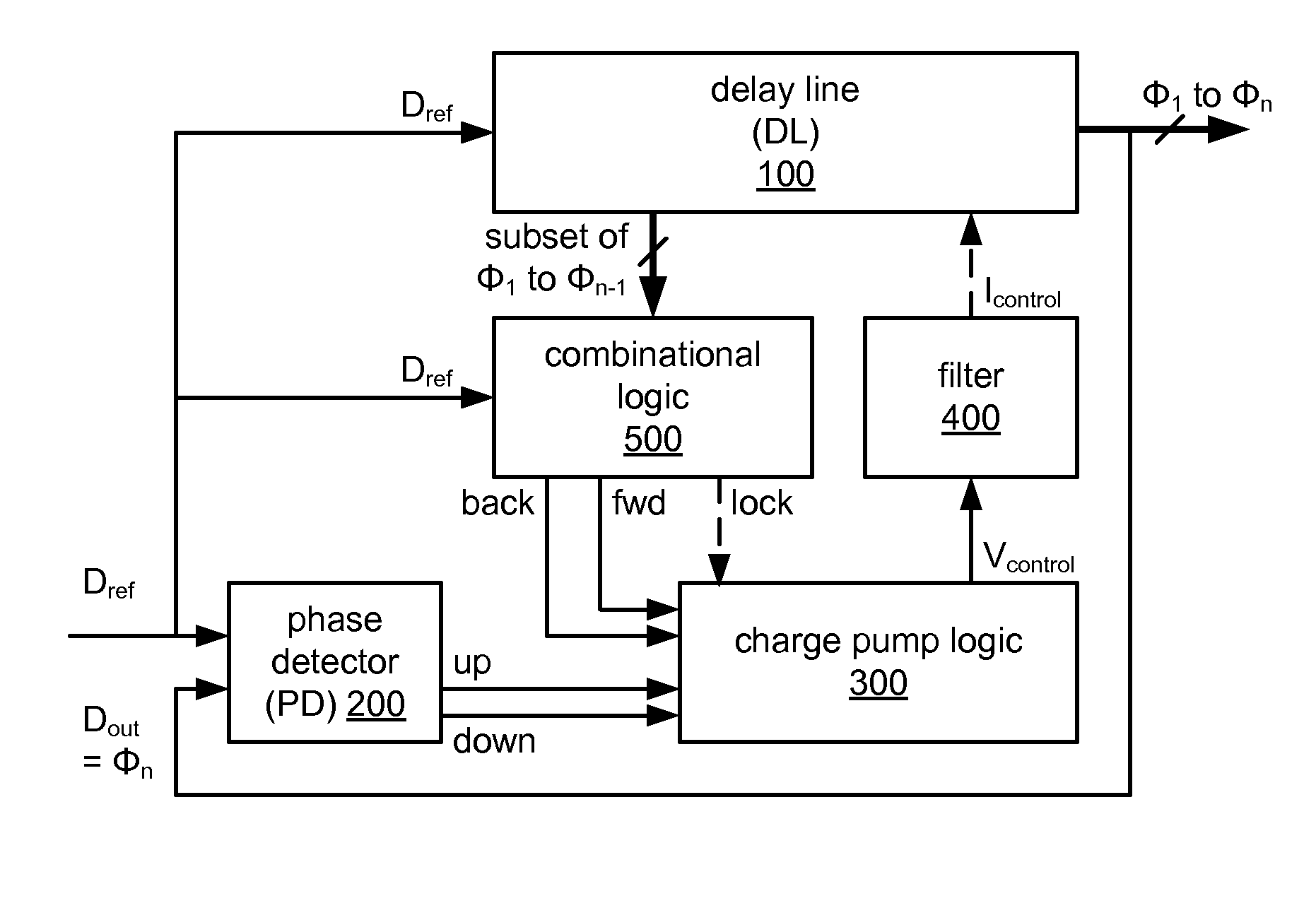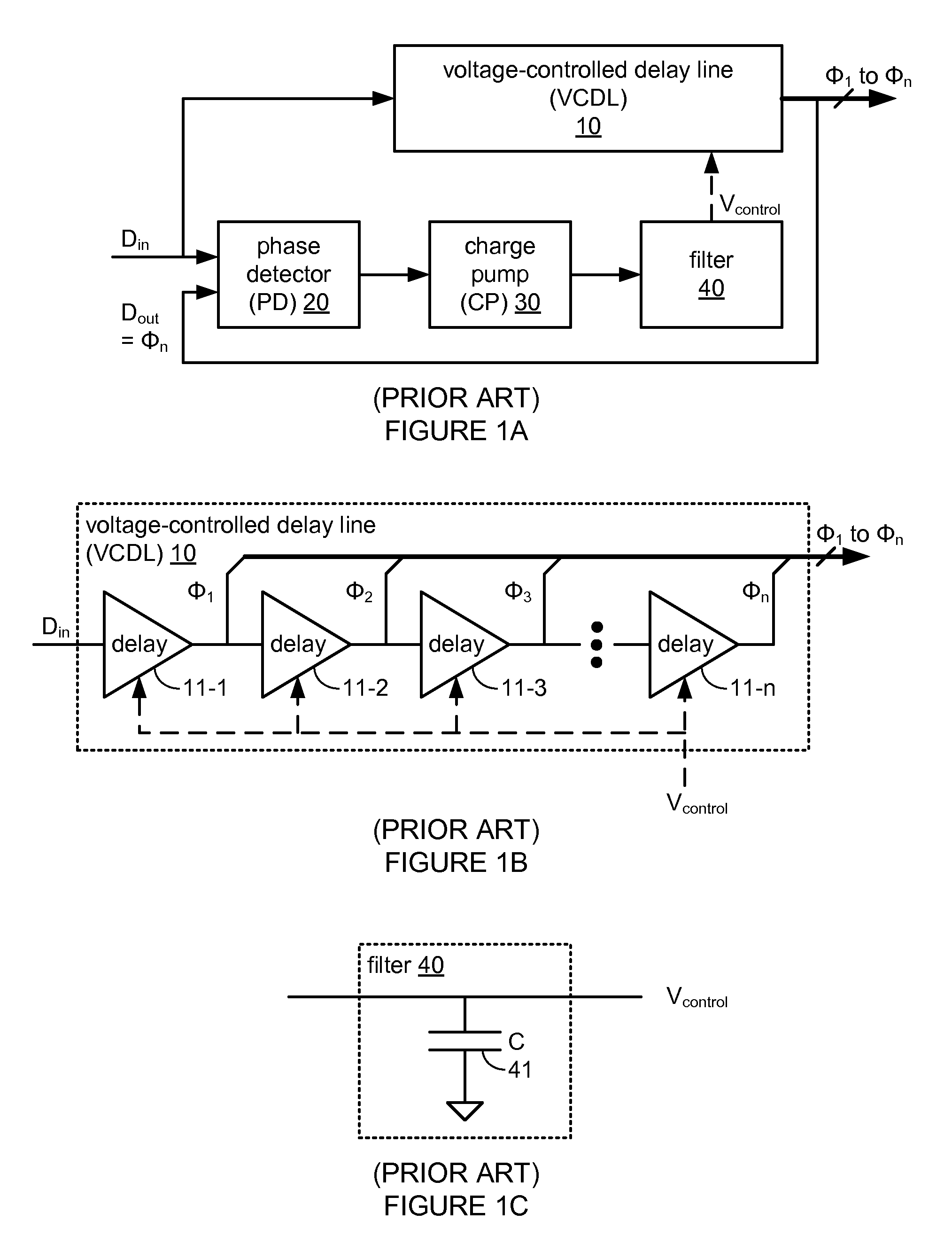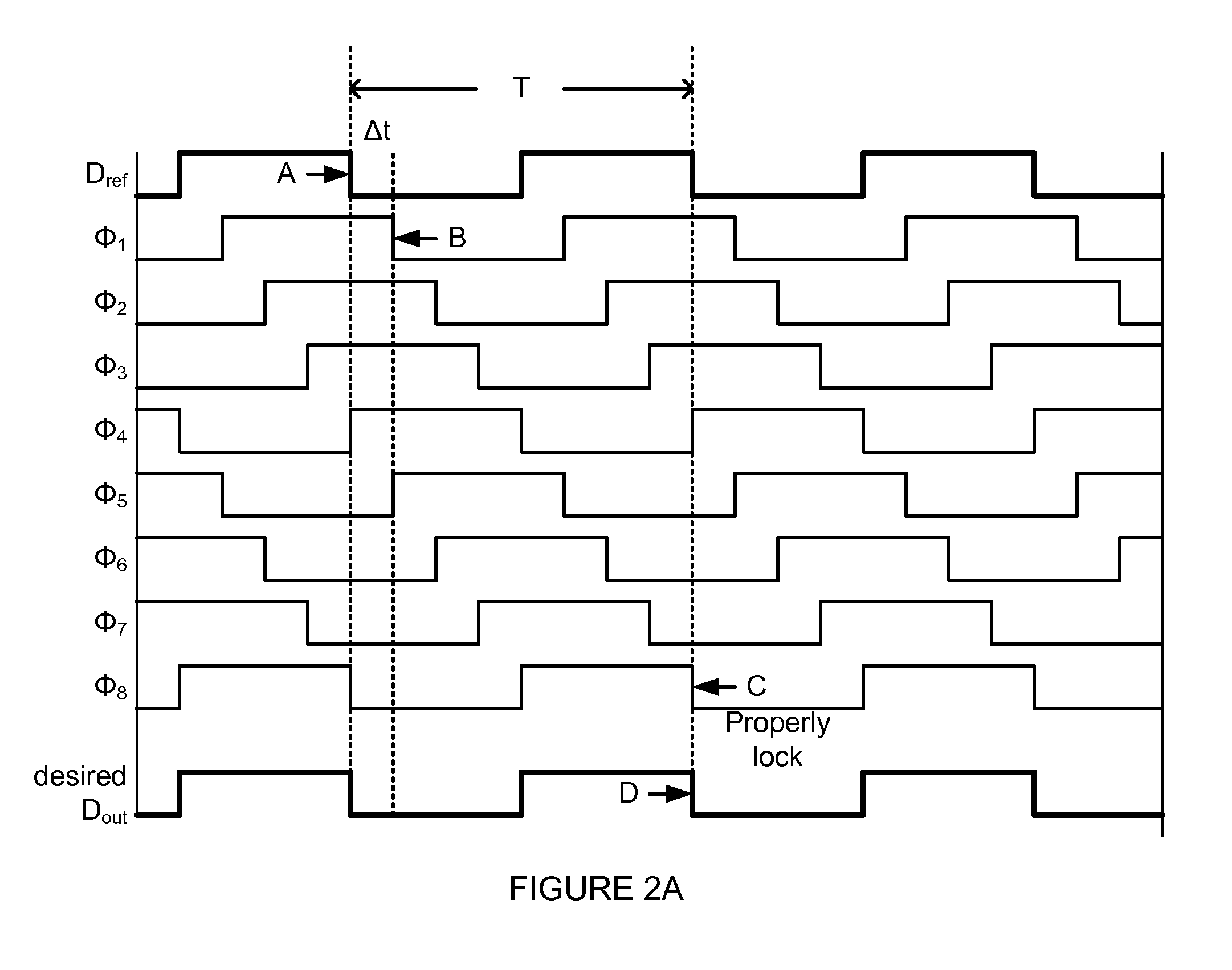False lock protection in a delay-locked loop (DLL)
a delay-locked loop and false lock protection technology, applied in the direction of electrical equipment, pulse automatic control, etc., can solve the problems of delay clock signal sequence, delay period t might not be set to provide such properly spaced delay clock signal, and additional noise produced by the combined high-low and low-high transition of signals
- Summary
- Abstract
- Description
- Claims
- Application Information
AI Technical Summary
Problems solved by technology
Method used
Image
Examples
first embodiment
[0071]FIGS. 7A, 7B, 8A and 8B show embodiments of charge pump logic 300 for the DLL of FIG. 4. Charge pump logic 300 may include a single charge pump or may include multiple charge pumps. A first embodiment includes a multiplexer 310 and a single charge pump (CP) 311 as shown in FIG. 7A. Mux 310 accepts down / up indicators as data input signals from PD 200 of FIG. 4. Mux 310 also accepts back / forward indicators as data input signals and the lock indicator as a selection input signal from combinational logic 500 of FIG. 4. Base on the value of the lock indicator, mux 310 passes either the down / up pair or the back / forward pair to charge pump 311. CP 311 then adjusts its output control signal Vcontrol as directed by the indicators provided by mux 310.
second embodiment
[0072]In a second embodiment shown in FIG. 7B, the function of mux 310 of FIG. 7A is implemented with logical gates 320-325 and the function of charge pump 311 of FIG. 7A is implemented with switches 326, 329 and current sources 327, 328. The first switch (S1) 326 is controlled by an output signal from an OR gate 322 having two input ports fed by the output ports of two AND gates 320, 321. The first AND gate 320 accepts the forward indicator as a first input signal and an inverse of the lock indicator as a second input signal. The second AND gate 321 accepts the up indicator as a first input signal and the lock indicator as a second input signal. As implemented, a value of ‘1’ for the up or forward indicators along with the appropriate lock indicator means action (charging the charge pump to increase the control signal to shorten the delay time) and a value of ‘0’ for the up and forward indicators means inaction. The lock indicator is used to pass either the up or forward indicator....
third embodiment
[0074]In a third embodiment shown in FIG. 8A, charge pump logic 300 is implemented with multiple charge pumps 330, 331. A control signal Vcontrol is driven from either charge pump 330, 331. The first charge pump (CP-1) 330 may be active for a first value of the lock indicator while the second charge pump (CP-2) 331 may be active for a complement value of the lock indicator. For example, when combinational logic 500 determines that the DLL is out of a lock state, the lock indicator instructs charge pump logic 300 to activate CP-1330, thereby responding to the back and forward indicators from combinational logic 500 of FIG. 4. When combinational logic 500 determines that the DLL is in a lock state, the lock indicator instructs charge pump logic 300 to activate CP-2331, thereby responding to the up and down indicators from phase detector 200.
[0075]Charge pump logic including multiple charge pumps may advantageously use a first charge pump that has a high current for charging and discha...
PUM
 Login to View More
Login to View More Abstract
Description
Claims
Application Information
 Login to View More
Login to View More - R&D
- Intellectual Property
- Life Sciences
- Materials
- Tech Scout
- Unparalleled Data Quality
- Higher Quality Content
- 60% Fewer Hallucinations
Browse by: Latest US Patents, China's latest patents, Technical Efficacy Thesaurus, Application Domain, Technology Topic, Popular Technical Reports.
© 2025 PatSnap. All rights reserved.Legal|Privacy policy|Modern Slavery Act Transparency Statement|Sitemap|About US| Contact US: help@patsnap.com



